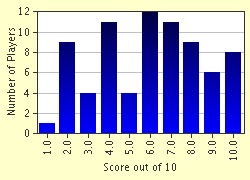Quiz Answer Key and Fun Facts
1. According to the original Census Act, UK censuses were to be held when?
2. For which years are useful censuses of England & Wales accessible in the public domain? I.e. those containing the names of the people being counted.
3. Where can one NOT access the original census returns from 1841 to 1911? The hand-written pages that is, not transcriptions.
4. Much useful information was recorded on the census return sheets, but what piece of information was NOT asked for in the censuses from 1841 through 1901?
5. When were accurate ages and birthplaces first asked for?
6. If a household includes a head, his wife and a child only ten years younger than the mother, and who is described as 'son' or 'daughter', what is the likeliest scenario?
7. I find my great grandfather aged 6 in the 1881 census. (Ahh!)
Assuming this age was given accurately, what is the most likely year of his birth?
8. I don't know my grandmother's maiden name, as she would be recorded in the census as Elizabeth Jacobs, wife of Thomas Jacobs.
Which of the following people recorded in a household that includes grandad as head would give the BEST hint as to granny's maiden name?
9. Why in a census transcription, do I sometimes come across an unusually large bunch of people called Doe, or Do?
10. What was the most common occupation noted for men in the early Victorian censuses (as written on the census)?
Source: Author
DaveJacobs
This quiz was reviewed by FunTrivia editor
Moo before going online.
Any errors found in FunTrivia content are routinely corrected through our feedback system.

